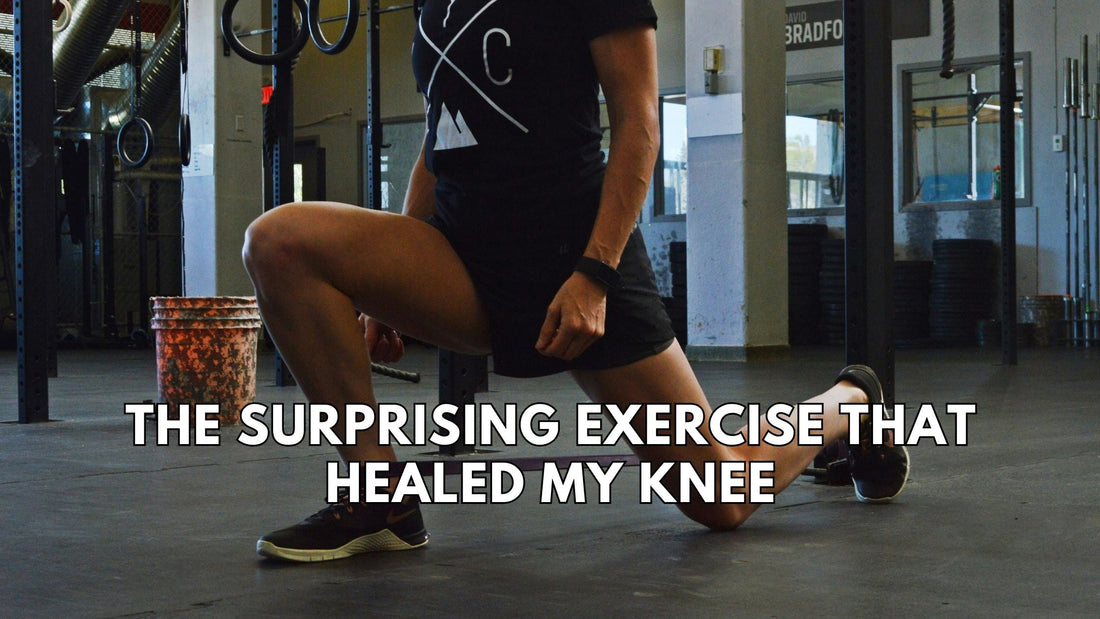
A Physical Therapist's Journey: How One Exercise Helped My Knee Recovery
Dr. Rob Letizia PT, DPTShare
My knee injury happened on a Tuesday morning in February 2019. I was performing a Bulgarian split squat and pushed beyond my limits. The audible pop told me everything I needed to know, I had seriously injured myself.
Within hours, my right knee was severely swollen, and bending became extremely painful. As a physical therapist with two decades of experience helping others recover from knee injuries, I found myself on the other side of the treatment table.
The most concerning aspect wasn't just the immediate pain, it was watching my range of motion decrease daily. Simple activities became challenging, and I could feel the stiffness setting in.
Rethinking Traditional Approaches
In my clinical experience, I've observed that the conventional "rest and wait" approach often falls short for knee recovery. While rest has its place in acute injury management, prolonged immobilization can lead to joint stiffness, muscle weakness, and fear of movement.
Important Note: This article shares one person's experience and should not replace professional medical advice. Always consult with a healthcare provider before beginning any exercise program, especially after an injury.
I've seen many patients arrive at my clinic after weeks or months of complete activity avoidance, only to find their joints have become increasingly stiff and their supporting muscles weakened. The key insight from my training and experience is that controlled, appropriate movement, when cleared by a healthcare professional, often plays a crucial role in recovery.
The Exercise That Made a Difference
Please consult your healthcare provider before attempting this or any exercise following an injury.
The movement that became central to my recovery protocol was a modified heel-sitting position. Here's how it worked for me:
Starting on hands and knees, I would slowly shift my weight back toward my heels, stopping at the first sign of discomfort or resistance. Then I'd return to the starting position. The key was respecting my body's current limitations rather than forcing through pain.
Initially, I could barely move back a few inches before encountering resistance. However, with consistent, gentle practice (always within comfortable limits), my range gradually improved over several months.
Understanding the Potential Benefits
From a physiological standpoint, this type of controlled compression movement may offer several benefits:
- Joint nutrition: Gentle compression and decompression can help facilitate fluid exchange in the joint
- Tissue mobility: Progressive, pain-free movement may help maintain tissue flexibility
- Neural adaptation: Gradually reintroducing movement patterns can help reduce movement-related anxiety
- Muscle activation: The position engages various muscle groups that support knee function
However, these benefits are theoretical for any individual case, and what worked for me may not be appropriate for everyone.
Building a Progressive Program
Always work with a qualified healthcare professional when developing a recovery program.
After regaining basic heel-sitting mobility and with professional guidance, I gradually incorporated additional exercises:
- Supported variations: Using props to limit range initially, then progressively reducing support
- Weighted movements: Gradually adding load as tolerated and approved by my treatment team
- Functional patterns: Progressing to movements that mimicked daily activities
Each progression was carefully monitored and adjusted based on my response and professional assessment.
The Importance of Professional Guidance
While sharing my personal experience, I cannot emphasize enough the importance of proper medical evaluation and professional guidance. Knee injuries can vary dramatically in their nature and severity, and what's appropriate for one person may be harmful for another.
Red flags that require immediate medical attention include:
- Severe swelling that doesn't improve with elevation and rest
- Inability to bear weight
- Significant instability or "giving way"
- Numbness or tingling
- Signs of infection (redness, warmth, fever)
Key Takeaways
My recovery taught me several important lessons:
- Movement matters: Appropriate, progressive movement, when cleared by healthcare professionals, often plays a vital role in recovery
- Patience is essential: Recovery is typically a gradual process that requires consistency over time
- Professional guidance is crucial: Every injury is different and requires individualized assessment and treatment
- Prevention is key: Once recovered, maintaining strength and mobility can help prevent future injuries
Moving Forward Responsibly
If you're dealing with knee pain or injury, please don't attempt to self-diagnose or self-treat based on any single story or article. Instead:
- Seek evaluation from a qualified healthcare provider
- Get a proper diagnosis and treatment plan
- Work with licensed professionals like physical therapists who can design safe, progressive programs
- Follow medical advice and attend all recommended follow-up appointments
My knee did recover well, but this was the result of professional treatment, appropriate progression, and careful monitoring, not just one exercise performed in isolation.
About the Author
Dr. Rob Letizia is a licensed physical therapist with over twenty years of clinical experience. He specializes in orthopedic rehabilitation and hosts the Art of Recovery Podcast. Dr. Letizia emphasizes evidence-based practice and the importance of individualized treatment approaches for optimal patient outcomes.
Medical Disclaimer: This article is for informational purposes only and is not intended as medical advice. Always consult with qualified healthcare professionals for proper diagnosis and treatment of injuries or medical conditions. Individual results may vary, and what works for one person may not be appropriate for another.




1 comment
What a compelling and honest journey of recovery! Your story inspires hope and reminds us how a single focused exercise can lead to real transformation. Thank you for sharing.